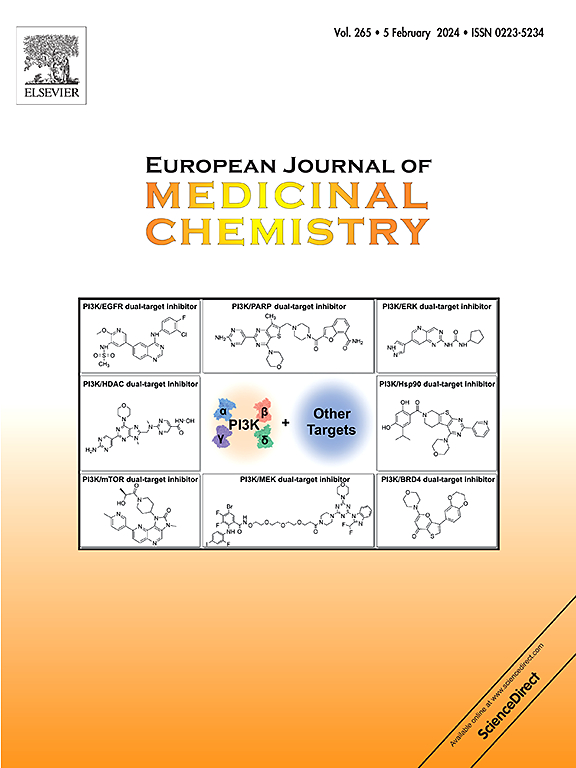Gramicidin S类似物:未来抗菌药物开发的一个有希望的方向?
IF 6
2区 医学
Q1 CHEMISTRY, MEDICINAL
引用次数: 0
摘要
Gramicidin S (GS)是由短芽孢杆菌产生的一种有效的环十肽抗生素,对革兰氏阳性菌具有很强的活性,目前仍用于临床局部治疗皮肤和咽喉感染。尽管其疗效显著,但由于其溶膜作用机制存在明显的溶血毒性,限制了GS的临床应用。本文综述了80多年来GS及其类似物的构效关系(SAR)研究,重点介绍了增强抗菌活性同时降低细胞毒性的关键策略。特别关注氨基酸取代、立体化学、序列修饰和拟肽片段结合的影响。此外,我们讨论了基于gs的低聚物和聚合物,以及具有扩展或收缩大环的类似物,强调了它们对生物活性和构象稳定性的影响。总的来说,这些见解强调了GS作为下一代抗菌肽设计的弹性支架的价值,具有改善的治疗指标和对耐药病原体的效力。本文章由计算机程序翻译,如有差异,请以英文原文为准。


Analogues of gramicidin S: A promising direction for future antibacterial drug development?
Gramicidin S (GS) is a potent cyclic decapeptide antibiotic produced by Bacillus brevis, exhibiting strong activity against Gram-positive bacteria and remaining in clinical use for the topical treatment of skin and throat infections. Despite its efficacy, GS's clinical application is restricted due to significant hemolytic toxicity associated with its membranolytic mechanism of action. This review summarizes over 80 years of structure–activity relationship (SAR) studies on GS and its analogues, highlighting key strategies to enhance antibacterial activity while reducing cytotoxicity. Particular focus is given to the influence of amino acid substitutions, stereochemistry, sequence modifications, and the incorporation of peptidomimetic fragments. Additionally, we discuss GS-based oligo- and polymers, as well as analogues with expanded or contracted macrocycles, emphasizing their effects on biological activity and conformational stability. Collectively, these insights underscore the value of GS as a resilient scaffold for next-generation antimicrobial peptide design with improved therapeutic indices and potency towards resistant pathogens.
求助全文
通过发布文献求助,成功后即可免费获取论文全文。
去求助
来源期刊
CiteScore
11.70
自引率
9.00%
发文量
863
审稿时长
29 days
期刊介绍:
The European Journal of Medicinal Chemistry is a global journal that publishes studies on all aspects of medicinal chemistry. It provides a medium for publication of original papers and also welcomes critical review papers.
A typical paper would report on the organic synthesis, characterization and pharmacological evaluation of compounds. Other topics of interest are drug design, QSAR, molecular modeling, drug-receptor interactions, molecular aspects of drug metabolism, prodrug synthesis and drug targeting. The journal expects manuscripts to present the rational for a study, provide insight into the design of compounds or understanding of mechanism, or clarify the targets.

 求助内容:
求助内容: 应助结果提醒方式:
应助结果提醒方式:


